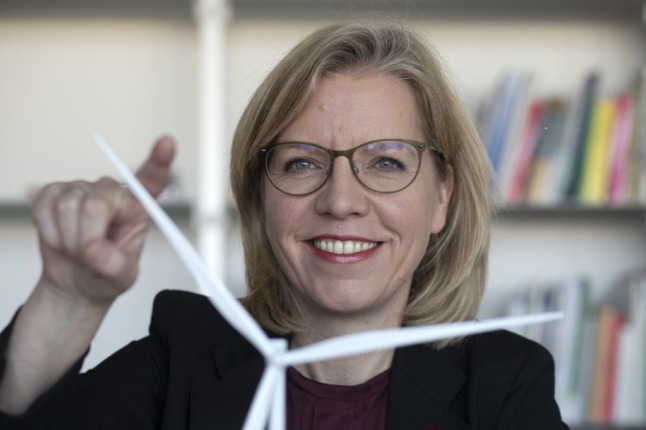The climate bonus, or Klimabonus in German, is an essential part of Austria’s eco-tax reform, a larger project with several measures to incentivise environmental choices such as riding the public transport.
The bonus would offset some of the costs brought by a new CO2 tax in Austria.
READ ALSO: Austrian government unveils ‘eco’ tax reform
“With the Klimabonus, we ensure that climate-friendly behaviour is rewarded and the people in our country are relieved. If you take good care of the climate, you pay less CO2 tax and end up having more of this money left”, Climate Minister Leonore Gewessler (Greens) said on Twitter.
Mit dem #KlimaBonus sorgen wir dafür, dass klimafreundliches Verhalten belohnt & die Menschen in unserem Land entlastet werden. Wer gut aufs Klima aufpasst, zahlt weniger CO2-Bepreisung und hat am Ende mehr von diesem Geld übrig. (4/4)
— Leonore Gewessler (@lgewessler) May 19, 2022
The Austrian government plans to set up a web site with more information on the bonus in June. Until then, here is what you need to know about the new compensation and how to get it.
Who is entitled to the payment?
Anyone who has had their primary residence in Austria for at least 183 days will be entitled to the bonus. Children are also entitled, but if they are younger than 18 years old, they will receive 50 per cent of the respective amount of the climate bonus.
READ ALSO: EXPLAINED: How to get your €500 Kurzarbeit bonus in Austria
“This is the first time that all people, regardless of age, place of residence, regardless of employment or pension or training status, have received a federal payment,” said Gewessler on Friday in the Ö1 broadcast.
What is this ‘respective amount’?
Not everyone will receive the same amount of money. The value changes depending on where the recipient lives and what is the offer of public transport there. Viennese, then, will receive the lowest amount of money: a one-off € 100 payment.
READ ALSO: EXPLAINED: How to claim your €200 voucher for electronics repair in Austria
There are four levels of payment depending on the municipality: €100 for urban centres with the highest-ranking development (which is only Vienna), €233 for urban centres with good development of public transport, €167 in centres and surrounding areas with good basic development of the public system, and € 200 for rural municipalities.
If you live in Austria’s second-largest city, Graz, you fall into the second category and should expect a €133 bonus.
Some exceptions to the geographical rule apply, so people with disabilities who cannot use public transport will receive the total climate bonus (€200) regardless of where they live.
The Federal Government had already stated it estimated that a third of Austria’s population would receive the highest bonus.
How to get the bonus?
The payment is pretty straightforward; there is no need to apply for it, and it will be done directly into your bank account, just make sure that you have it up to date on the FinanzOnline website – the final date to do so is June 30th.
Those who receive a pension and other benefits will receive the bonus in that same bank account.
READ ALSO: EXPLAINED: How freelancers in Austria can pay four times less in social insurance
It is worth mentioning that the bank account doesn’t necessarily need to be from an Austrian bank.
People who don’t have a registered bank account will receive a letter with a voucher that can be redeemed in shops or exchanged for cash at a bank, Gewessler said.
According to the Ministry, payments should start at the beginning of October, and those receiving a transfer will not have to wait for long to see the money in their bank accounts. However, people receiving letters with the vouchers could have to wait a few weeks.



 Please whitelist us to continue reading.
Please whitelist us to continue reading.
Member comments